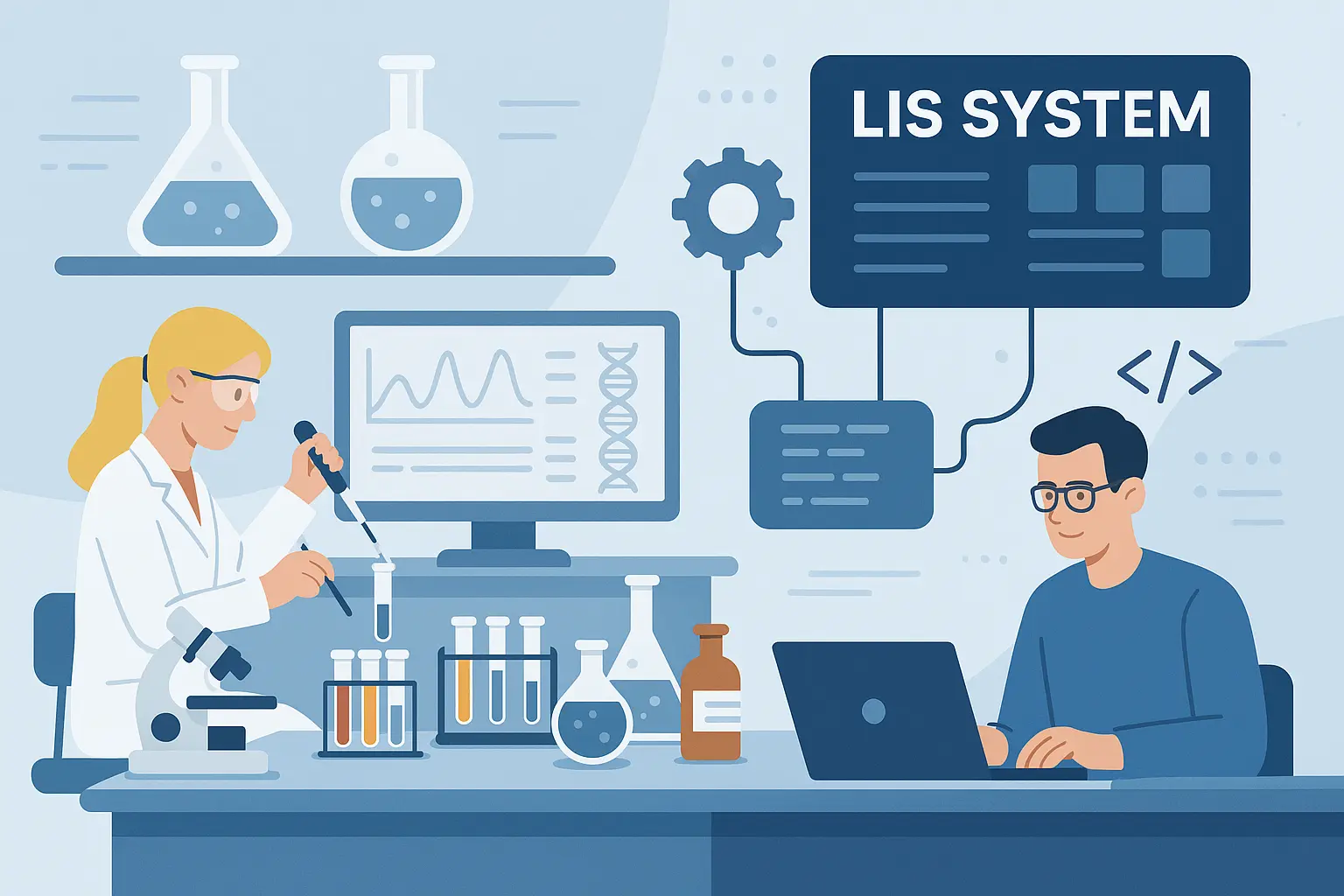Blog
How LIS Software Helps Pathologists Sign Out Anatomic Pathology Cases Faster
April 3, 2025
We invite you to join Implementations Director Petros Martirosian as he demonstrates how the LigoLab Informatics Platform, an enterprise pathology lab software company specializing in advanced laboratory information system (LIS) software, helps pathologists review more cases and sign them out faster.
Of note, LigoLab’s LIS pathology lab management solution also includes an interwoven and silo-free module for laboratory revenue cycle management (in-house laboratory billing). We’ll highlight that part of the platform a bit later.
In the following video tutorial and screenshots, Martirosian showcases the intuitive, user-friendly interface of LigoLab’s anatomical pathology software and how the lab information system platform optimizes laboratory workflow management by minimizing clicks, thereby boosting pathologist productivity and turnaround times.
Martirosian opens the tutorial by explaining which basic anatomic pathology LIS case scenarios will be highlighted. The scenarios include:
- LIS system sign-out with a diagnosis template
- Lab information system sign out with a camera
- LIS system sign-out without a camera
- Lab information system sign-out using voice dictation software
Let’s start with the tutorial and then follow that with screenshots highlighting aspects of the anatomic pathology software and lab workflow at each stage.
Industry Insights: Anatomic Pathology Software Roundtable Recap: Balancing Pressures with the Promise of New Technology
LIS Pathology Case Sign-Out Tutorial
Launching the LIS Pathology Module and the Pathologist Queue
Martirosian begins by launching the laboratory information system software and logging in. From there, he’s taken directly to the LIS system’s Pathologist Queue, where all cases assigned to pathologists are listed.
Learn More: The Role of Anatomic Pathology Software in Optimizing Laboratory Workflow Management

LIS System Diagnosis Template Sign-Out
Martirosian starts the tutorial by demonstrating how a pathologist signs out a case with a diagnosis template. He takes a slide and scans it into the medical LIS with a barcode scanner. The scan automatically opens up a Microscopic Surgical Template with the cursor conveniently positioned in the Final Diagnosis field.
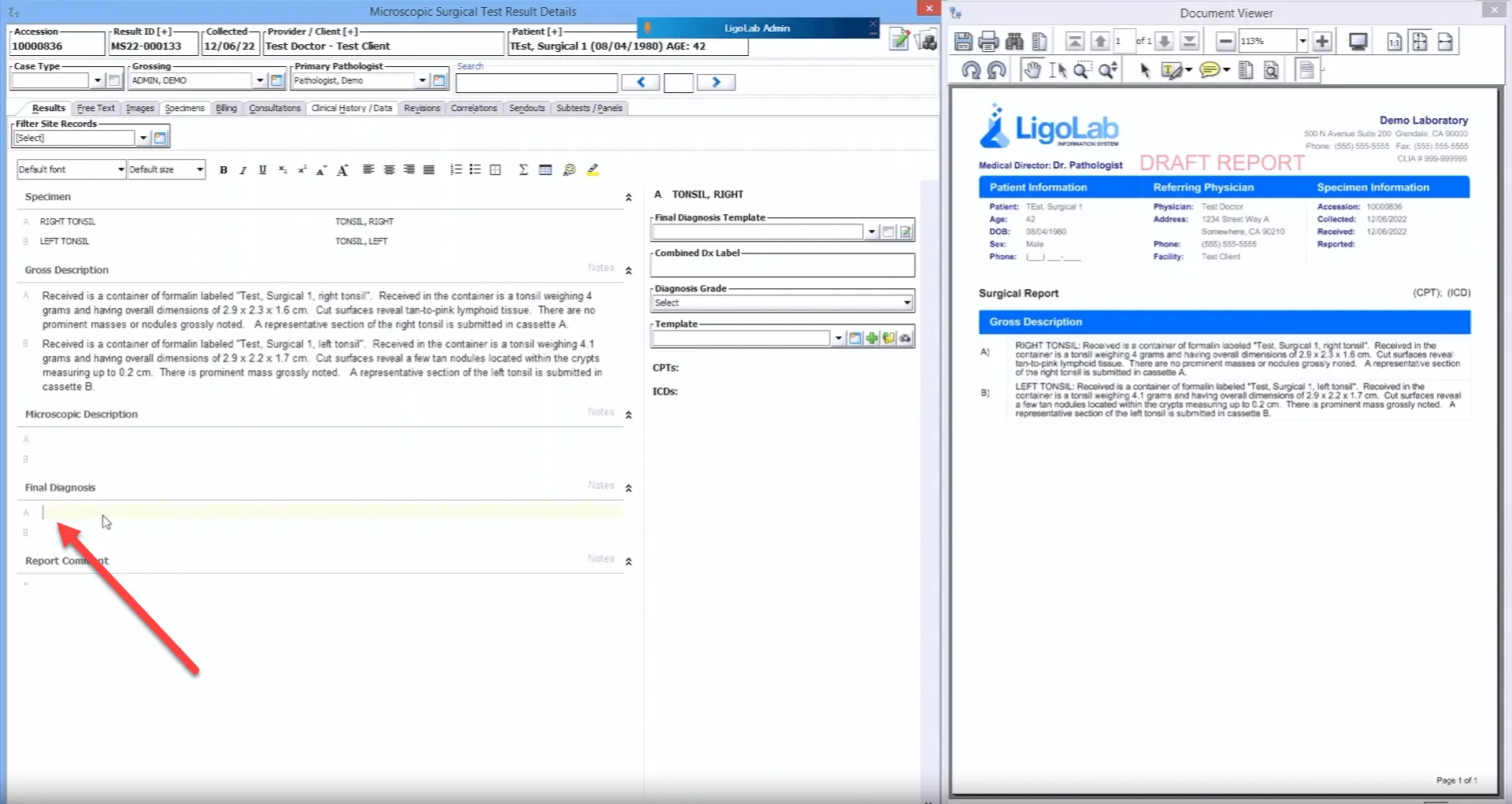
This is where the pathologist enters a preconfigured template code and then hits the space bar. Upon doing so, the lab information system automatically populates a Microscopic Description, a Final Diagnosis, and a Report Comment. This action also prompts the LIS pathology software to add the appropriate CPT and ICD codes for the case, with the data automatically populating within the Lab Report.
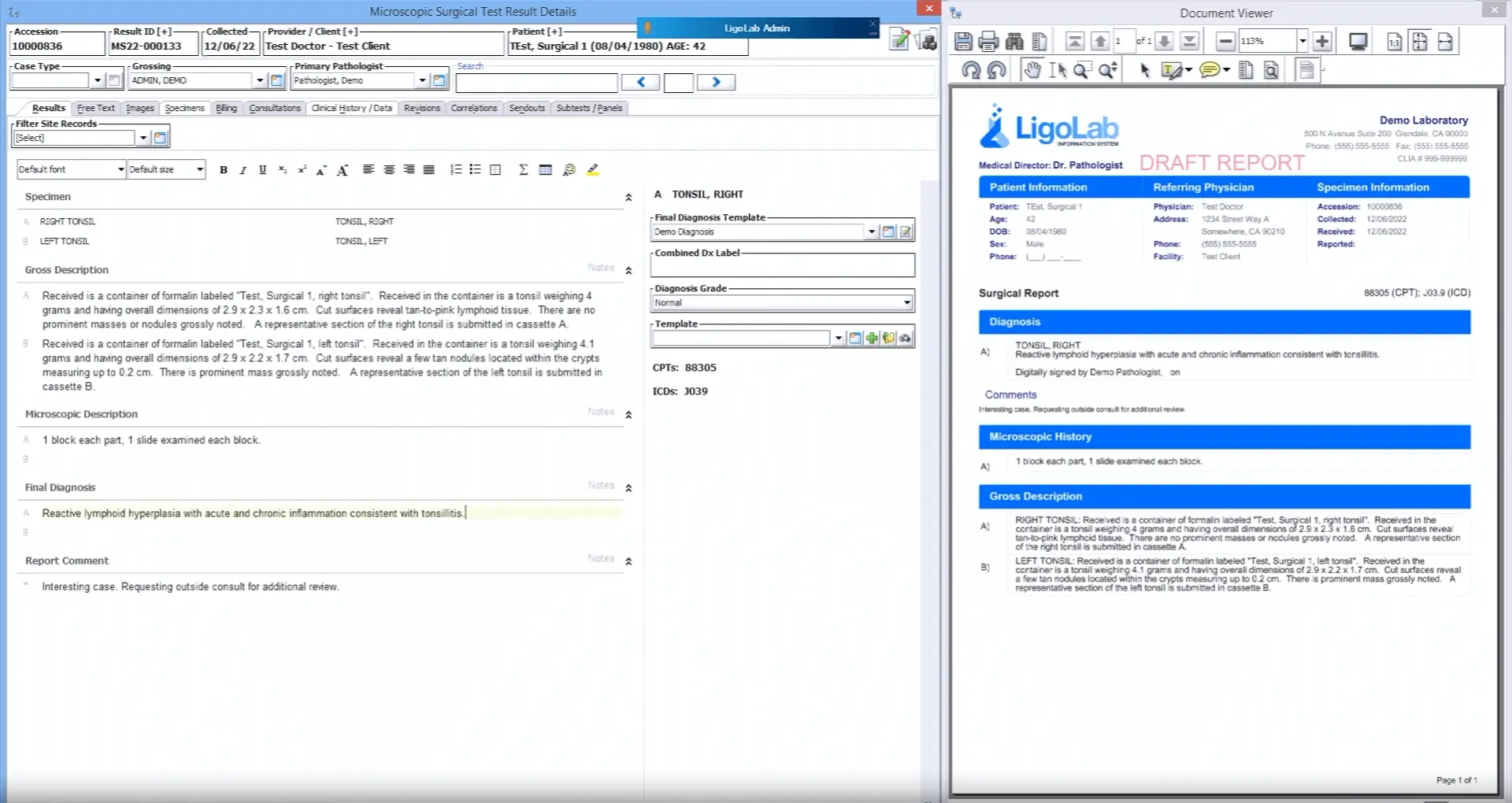
Next, the pathologist clicks the “Release” button located directly below the Lab Report. This brings up a Microscopic Pre-release Checklist window that provides a last-minute display of all relevant information. If, for example, an interoperative consultation has yet to be performed, that notification appears here.
It’s important to note that the Pre-release Checklist is an optional window and can be disabled based on preference.

After this final review of the case, the pathologist simply clicks “OK” to release the case and return to the Pathologist Queue, where all remaining cases are located.
As you can see, the LigoLab Informatics Platform and its Pathologist Queue are designed to enable quick signing out within the pathology lab reporting software, requiring only a few intuitive steps to go from case review to case release.
On-Demand Webinar: Learn How Modern Anatomic Pathology LIS Software Can Transform Your Lab’s Operations
Lab Information System and Microscope Camera Sign-Out
The tutorial continues with Martirosian selecting a second slide and scanning it into the medical LIS. Like before, the scan prompts the LIS software to open the Microscopic Surgical Template. From here, the pathologist can capture an image directly from a microscope camera integrated into the LIS system software by clicking on the “Camera” icon on the right side of the template.
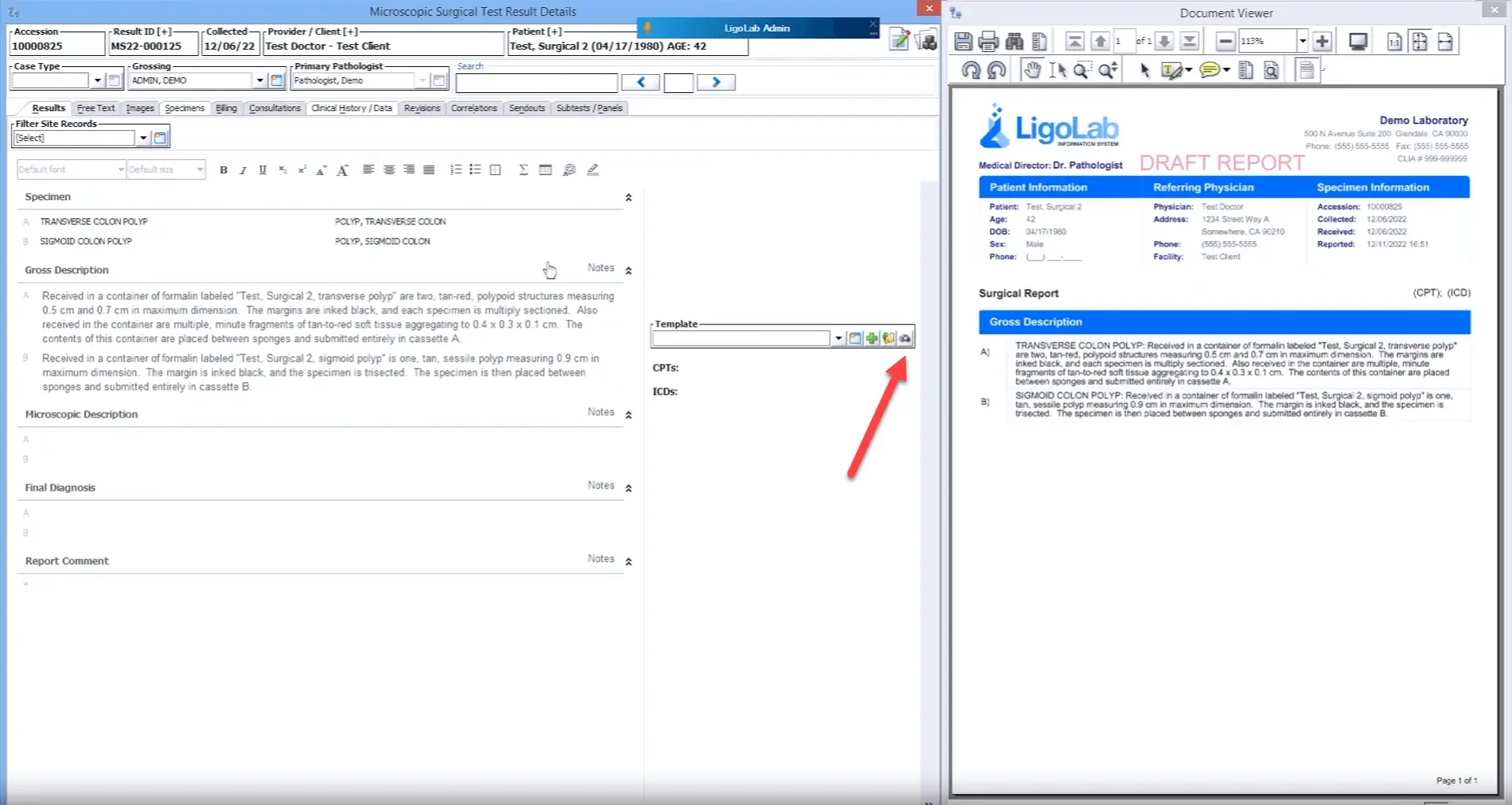
After clicking the icon, the anatomic pathology LIS displays the image shown through the microscope camera. The pathologist can then adjust the camera before capturing the desired image with the “Camera” icon in the microscope camera window.
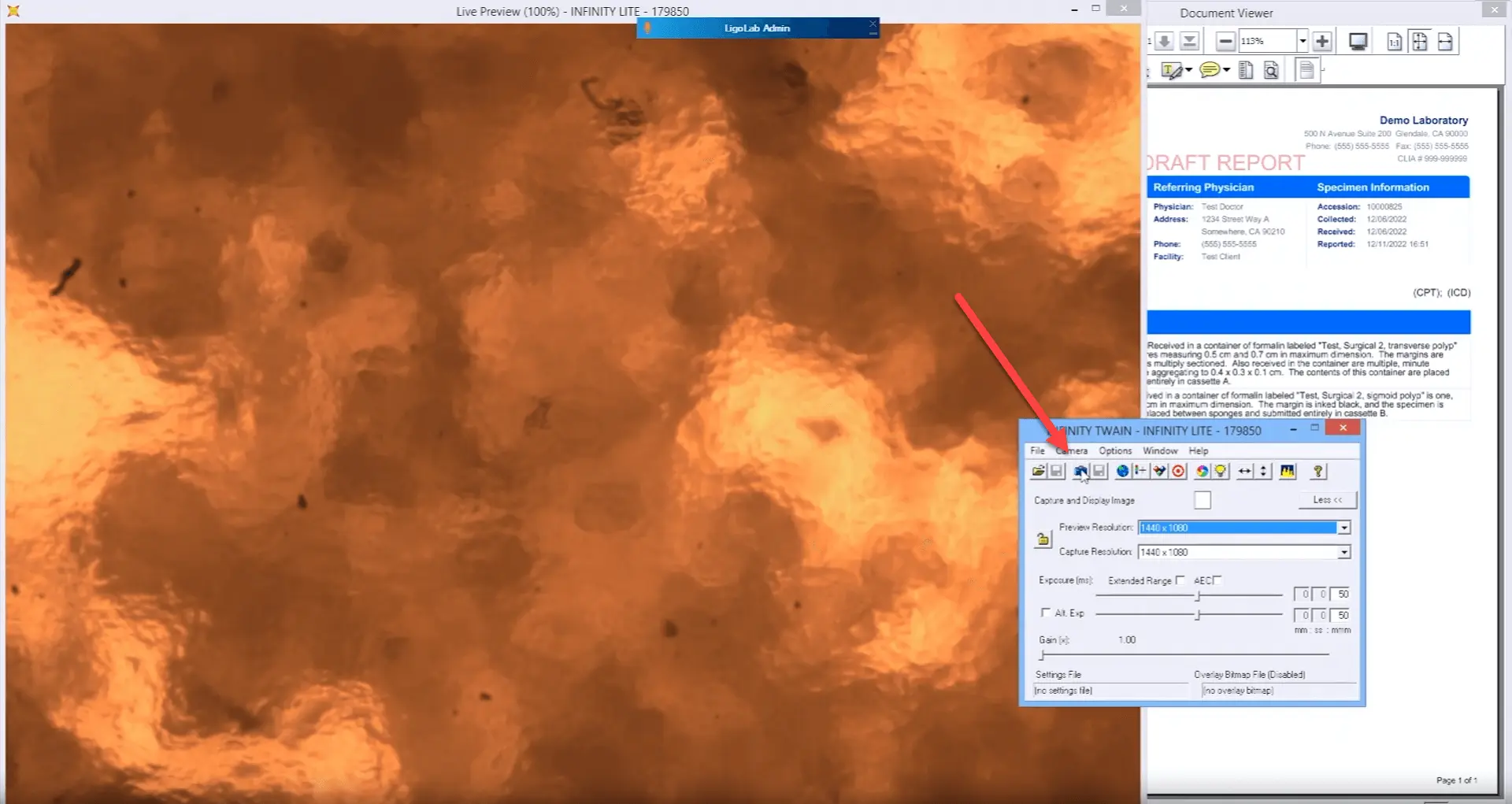
By doing so, the image is automatically added to the case. The pathologist then has the option to add a quick description and annotations to the image before clicking “Save.”
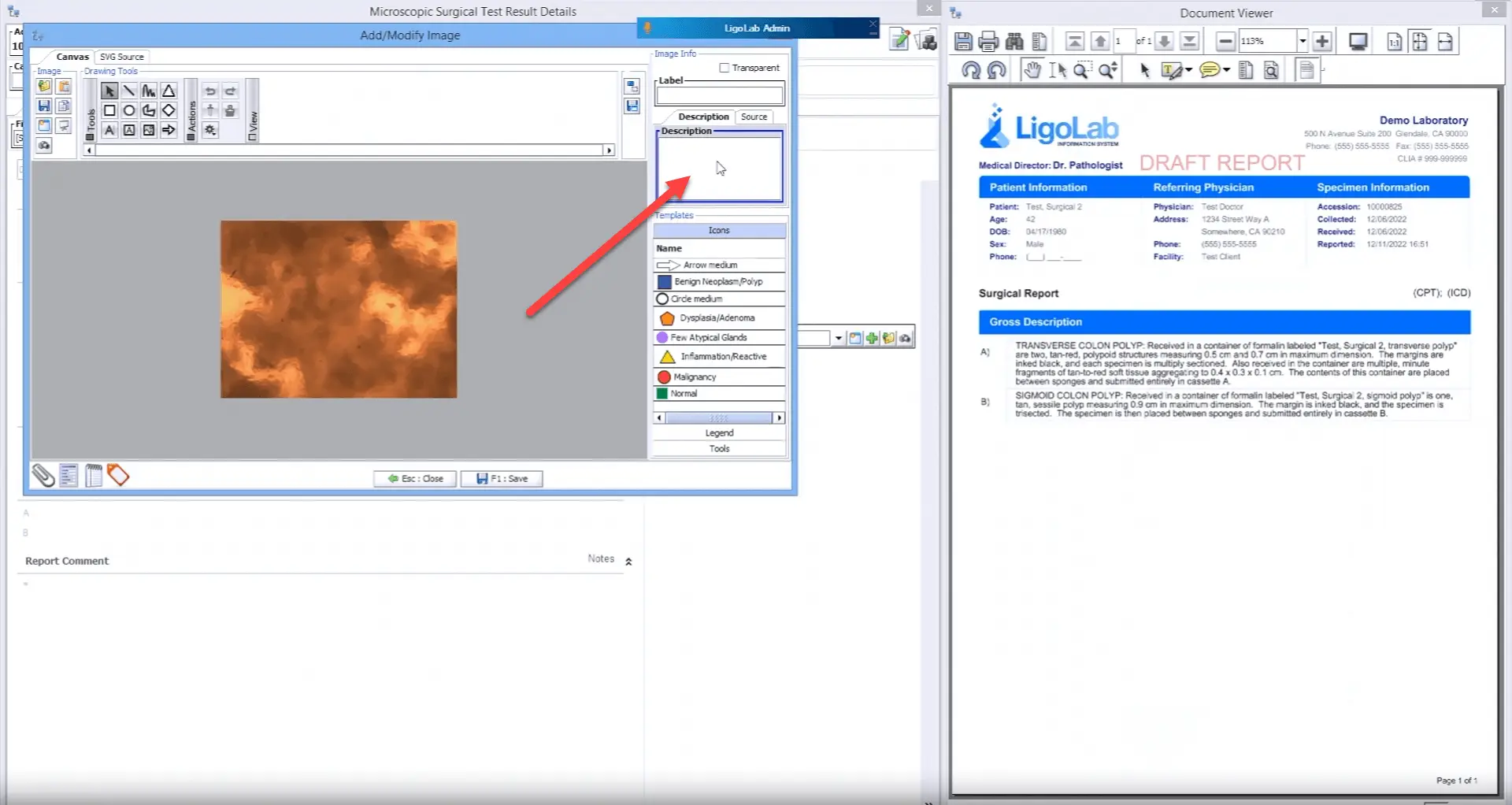
Once saved, the image is automatically dropped into the Lab Report. The pathologist next enters a preconfigured template code into the Final Diagnosis field (like before) to automatically populate that field, plus the Microscopic Description and Report Comment fields. With this action, the proper CPT and ICD codes are also automatically assigned to the case.
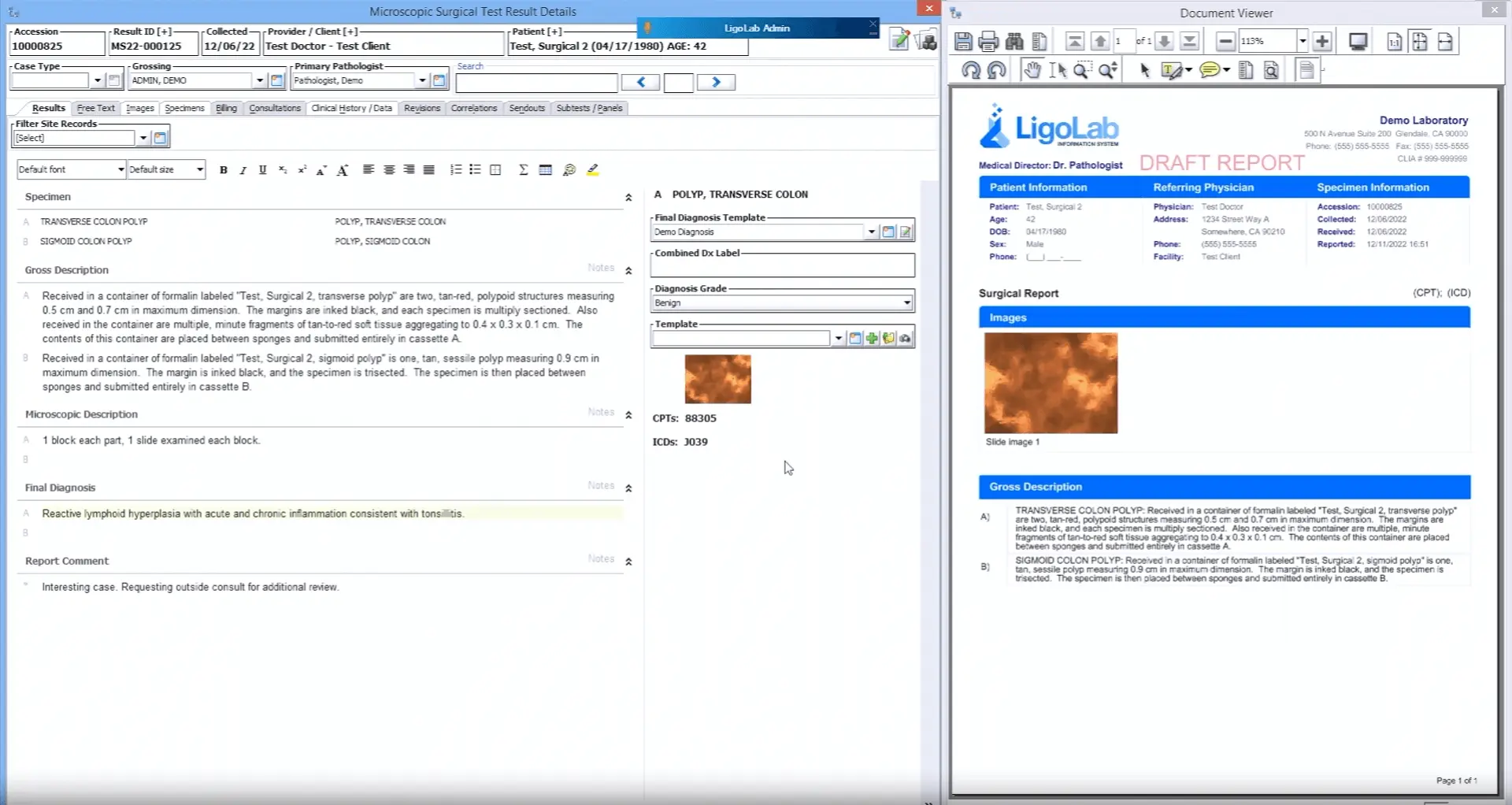
At this point, the pathologist releases the case, reviews the Microscopic Pre-release Checklist, and then clicks “OK” to sign out the case, removing it from the Pathologist Queue.
Learn More: Best LIS Software - Maximize Growth With Cutting Edge Pathology Lab Management Software
LIS System and No Camera Sign-Out
Next, Martirosian demonstrates how to insert an image file captured by an external source into a Lab Report. He scans in a third slide and the Microscopic Surgical Template appears. This time, instead of clicking the “Camera icon, he clicks the “Folder” icon directly to the left (see below). This action opens a window that allows the pathologist to navigate local folders on the LIS pathology workstation and select the desired image to be added to the Lab Report.
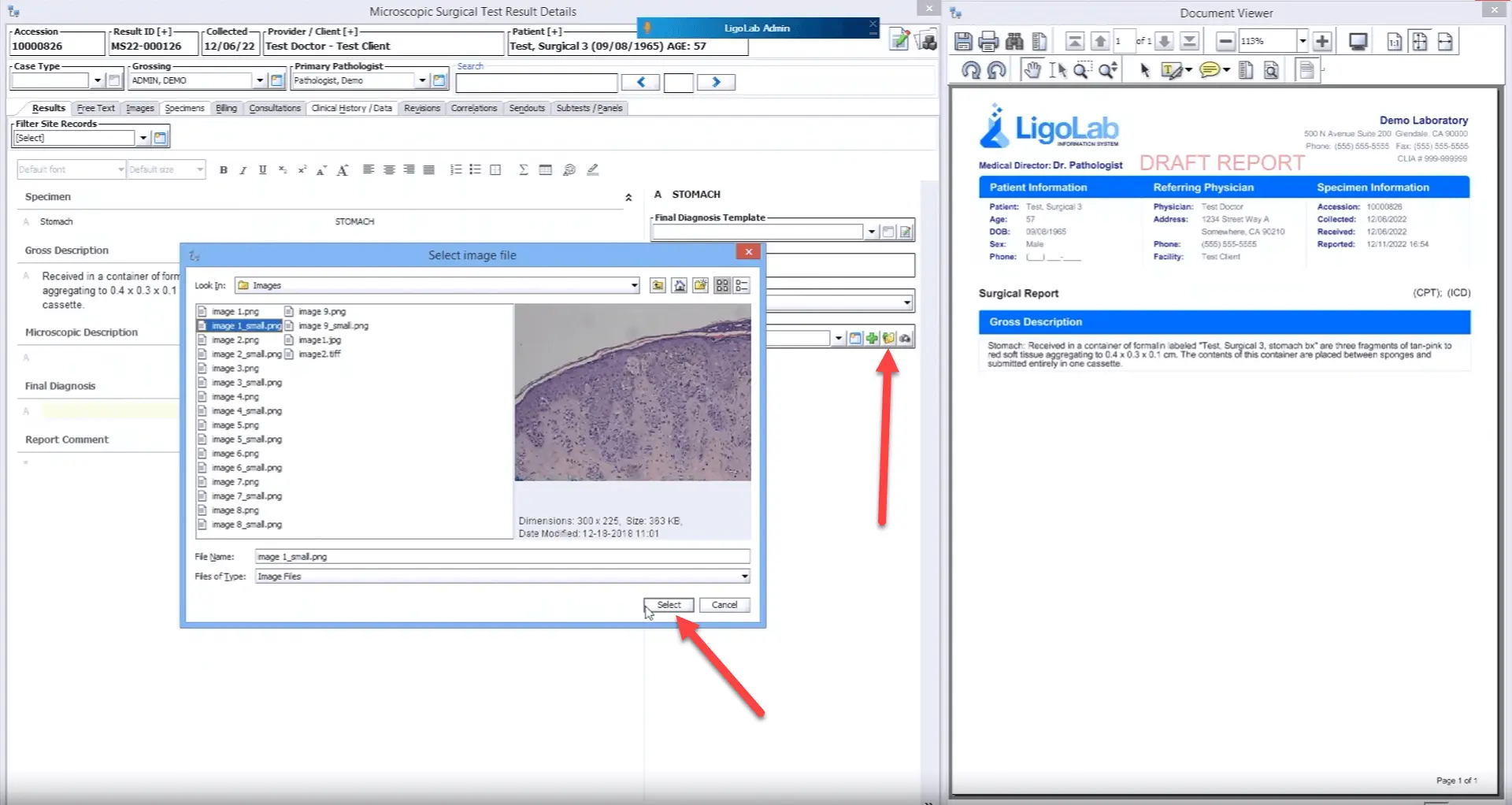
From here, Martirosian chooses an image and then hits “Select.” This causes the “Add/Modify Image” window to appear, where he can once again add a quick description or annotations to the image before clicking “Save,” which automatically adds the image to the Lab Report.
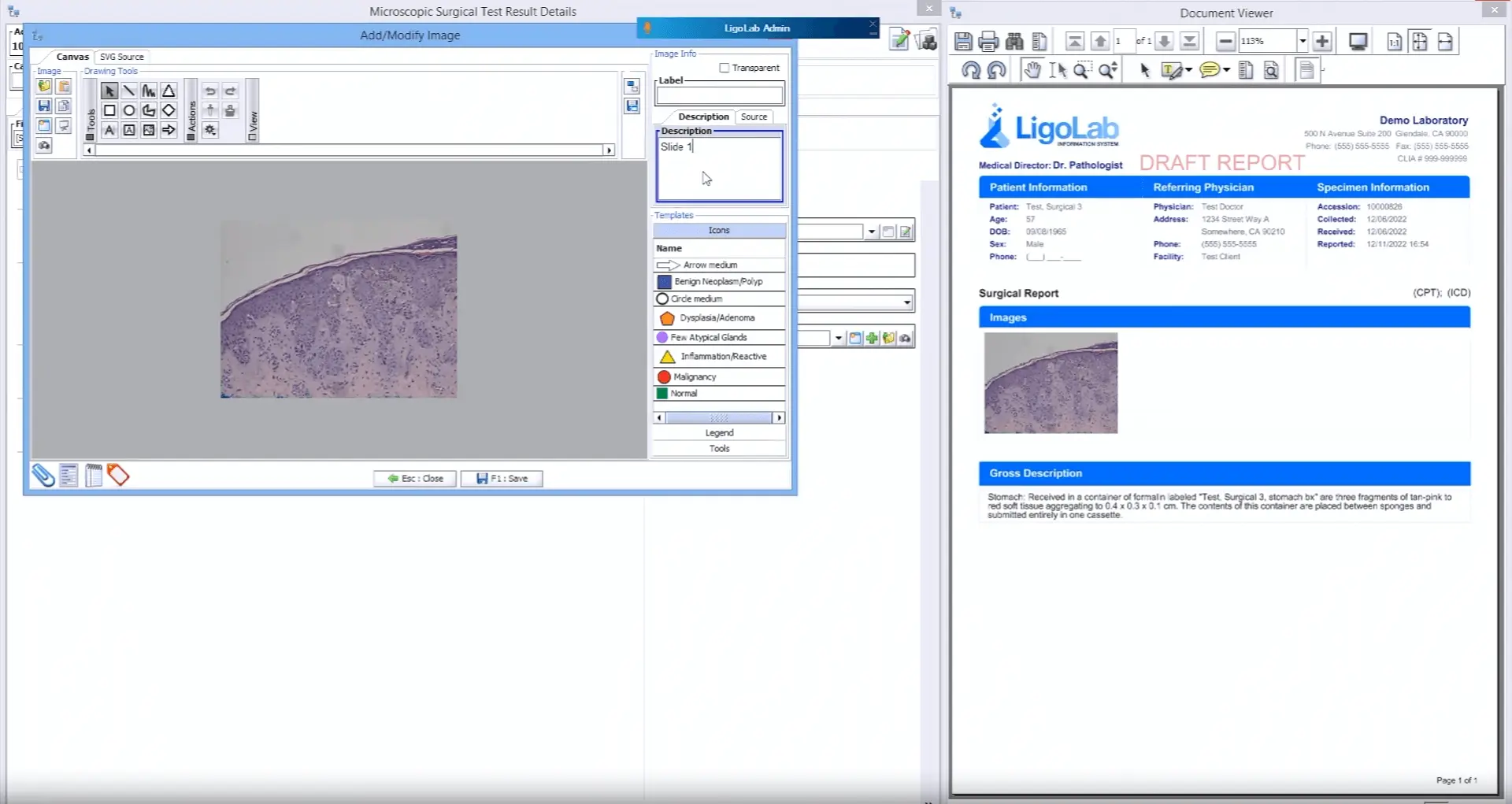
Martirosian then demonstrates how a pathologist who forgot the correct template code for a case can choose from a list of preconfigured templates from the Final Diagnosis Template Drop-down Menu.

Once the correct template code has been identified, the pathologist double-clicks on the template to add it to the case, and this automatically populates all of the relevant information.

From here, the pathologist hits “Release” at the bottom of the Lab Report and “OK” after reviewing the Microscopic Pre-release Checklist to release the case from the Pathologist Queue.
Learn More: Six Factors That Should Be Considered Before Upgrading Your Lab's Pathology Reporting Software
Lab Information System Voice Dictation Sign-Out
In his final example of expedited case sign-out, Martirosian demonstrates how the laboratory information system supports hands-free sign-out with voice dictation software. In this example, he only uses his voice to navigate the LIS software and sign out a case.
Martirosian begins by scanning a slide into the lab information system. The scan opens the Microscopic Surgical Template. Next, he enables the voice dictation solution via an integration with the laboratory information system software and populates the Final Diagnosis field with only his voice cues.
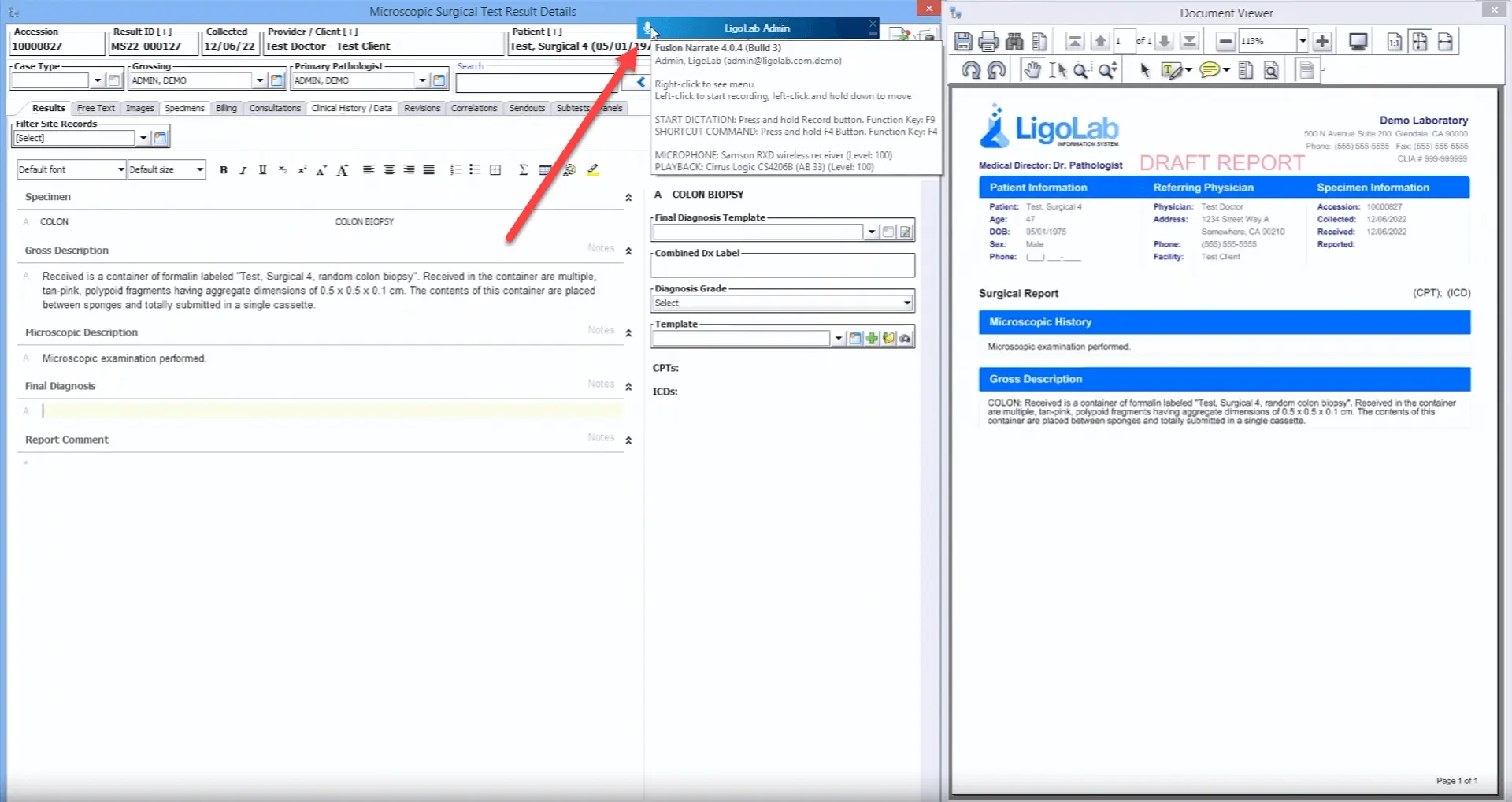
From there, he says “Open Capture,” “Capture Image, ” “Save Image,” and “Release Report” to quickly work the case without ever touching the LIS system’s workstation keyboard.
White Paper: Comparing the LigoLab Informatics Platform with Legacy Laboratory Information System Software
LigoLab’s All-in-One Medical LIS and Lab Billing Software Solution
LigoLab has provided its anatomic pathology software/LIS pathology lab partners with the industry’s most efficient laboratory information system for nearly 20 years.
The anatomic pathology LIS software module remains the centerpiece of a comprehensive informatics platform that supports all diagnostic disciplines (including clinical laboratory, molecular diagnostics, genomics, and toxicology testing).
To learn how LigoLab’s comprehensive LIS system solutions support growing anatomic pathology groups from quick order entry to swift result entry and sign-out (plus everything in between), we urge you to click the link below and start a conversation with a product specialist.





